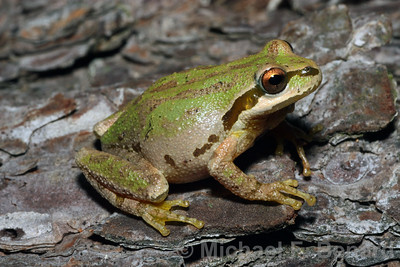shilohcreekkennels.com – Frogs are fascinating amphibians belonging to the order Anura (meaning “tail-less”), a group that also includes toads. They are characterized by their unique life cycle, diverse adaptations, and crucial role in ecosystems worldwide. From tiny poison dart frogs to massive Goliath frogs, they exhibit an incredible range of sizes, colors, and behaviors.
Physical Characteristics: Adaptations for Jumping and More
Frogs possess a suite of physical characteristics that distinguish them from other amphibians:
- Powerful Hind Limbs: Their elongated and muscular hind limbs are perfectly adapted for jumping, allowing them to escape predators and capture prey.
- Short Body and No Tail (Adults): Adult frogs have short, compact bodies and lack tails, unlike salamanders and newts.
- Smooth or Warty Skin: Frog skin can be smooth and moist, as in many aquatic species, or warty and dry, as in terrestrial toads.
- Large, Protruding Eyes: Their prominent eyes provide a wide field of vision, essential for detecting predators and prey.
- Tympanic Membranes (Eardrums): Located behind the eyes, the tympanic membranes are external eardrums that allow frogs to hear.
- Webbed Feet (Often): Many aquatic and semi-aquatic frogs have webbed feet, which aid in swimming.
Life Cycle: From Tadpole to Frog
Frogs undergo a remarkable transformation called metamorphosis, a complex process that involves significant changes in their anatomy and physiology:
- Egg: Frogs lay eggs in water, often in large masses called spawn.
- Tadpole: The hatched larvae, known as tadpoles, are fully aquatic with gills for breathing underwater and a tail for swimming. They are typically herbivorous, feeding on algae and other plant matter.
- Metamorphosis: Over time, tadpoles undergo a series of changes, including the development of limbs, the resorption of the tail, and the development of lungs for breathing air.
- Froglet: The transitional stage between tadpole and adult frog is called a froglet.
- Adult Frog: The fully metamorphosed frog is now adapted for life on land (although some species remain primarily aquatic).
Habitats and Distribution: A Global Presence
Frogs are found on every continent except Antarctica, inhabiting a diverse array of habitats:
- Rainforests: Rainforests are home to a vast diversity of frog species, including tree frogs, poison dart frogs, and glass frogs.
- Wetlands and Swamps: These areas provide ideal breeding grounds and foraging habitat for many frog species.
- Forests and Woodlands: Many terrestrial frogs live in leaf litter, under logs, and in burrows.
- Deserts and Arid Regions: Some frog species have adaptations for surviving in arid environments, such as the ability to burrow and estivate (a period of dormancy similar to hibernation).
- Ponds, Lakes, and Rivers: These aquatic habitats are essential for breeding and larval development.
Diet and Foraging: Carnivores and Opportunistic Feeders
Adult frogs are primarily carnivorous, feeding on a variety of prey:
- Insects: Insects are a staple food source for many frog species.
- Spiders and Other Arthropods: Spiders, mites, and other arthropods also form part of their diet.
- Worms and Other Invertebrates: Worms, slugs, and other invertebrates are consumed by some species.
- Small Vertebrates: Larger frog species may prey on small mammals, birds, reptiles, and even other frogs.
- Tadpoles: Tadpoles are mostly herbivorous, feeding on algae and plant matter, but some species are carnivorous or omnivorous.
Behavior: Vocalizations and Reproduction
Frogs exhibit a range of fascinating behaviors:
- Vocalizations: Frogs are well-known for their calls, which are used for attracting mates, establishing territories, and communicating with other frogs. Different species have distinct calls.
- Breeding: Frog breeding typically occurs in water, with males calling to attract females. Fertilization is usually external.
- Camouflage: Many frogs have coloration and patterns that help them blend in with their surroundings.
- Defense Mechanisms: Some frogs have skin secretions that are toxic or irritating to predators.
Defense Mechanisms: Toxins, Camouflage, and More
Frogs have evolved various defense mechanisms to protect themselves from predators:
- Skin Toxins: Many frog species secrete toxins from their skin, which can be poisonous or irritating to predators. Poison dart frogs are particularly well-known for their potent toxins.
- Camouflage: Blending in with their surroundings helps frogs avoid detection.
- Playing Dead: Some frogs feign death when threatened.
- Jumping and Escaping: Their powerful hind limbs allow them to quickly escape predators.
Ecological Importance: Indicators of Environmental Health
Frogs play a vital role in ecosystems as both predators and prey. They help control insect populations and serve as a food source for larger animals. They are also considered important indicators of environmental health, as they are sensitive to pollution and habitat degradation.
Conservation Status: Threats and Challenges
Many frog species are facing declines due to a variety of threats, including habitat loss, climate change, pollution, disease (such as chytridiomycosis), and invasive species. Conservation efforts are crucial to protect these important amphibians and their diverse habitats.
Conclusion: A World of Amphibian Wonders
Frogs are a diverse and fascinating group of amphibians, exhibiting a wide range of adaptations, behaviors, and ecological roles. Their unique life cycle, diverse habitats, and sensitivity to environmental changes make them an important part of the natural world. Understanding and protecting these creatures is essential for maintaining healthy ecosystems.
